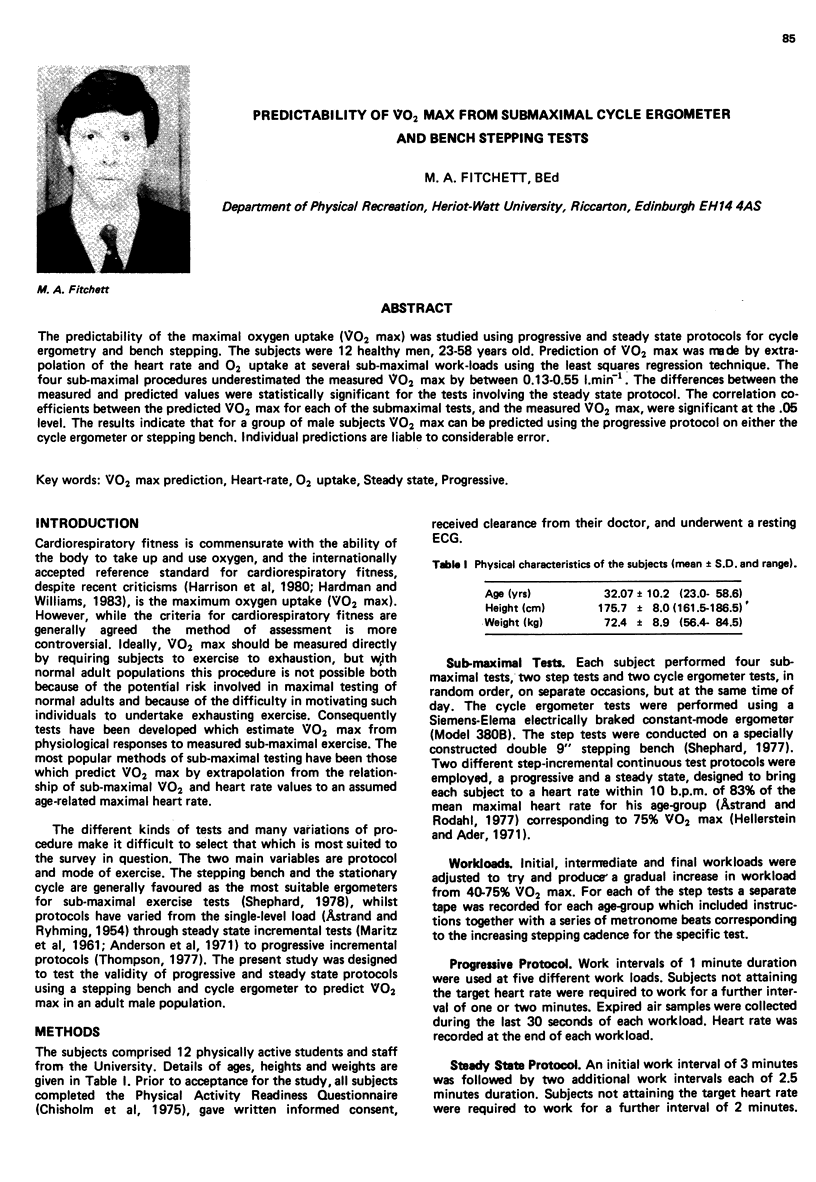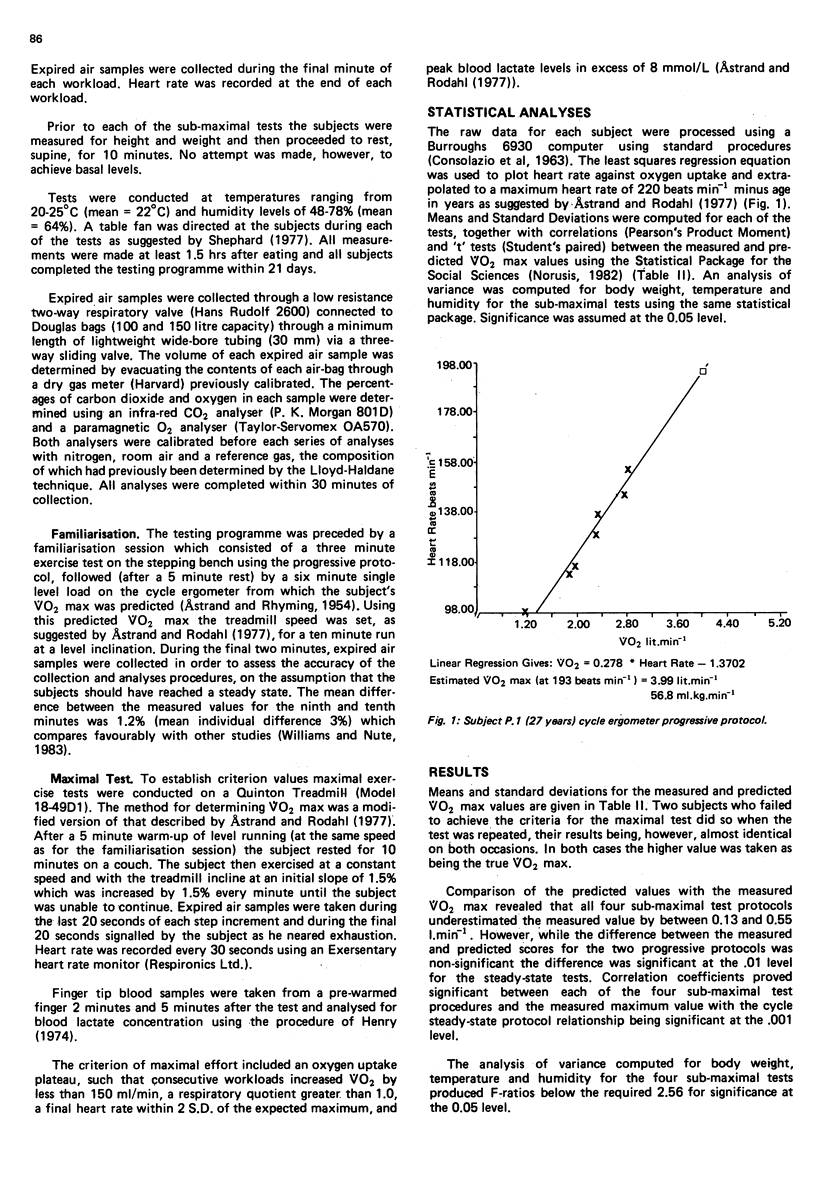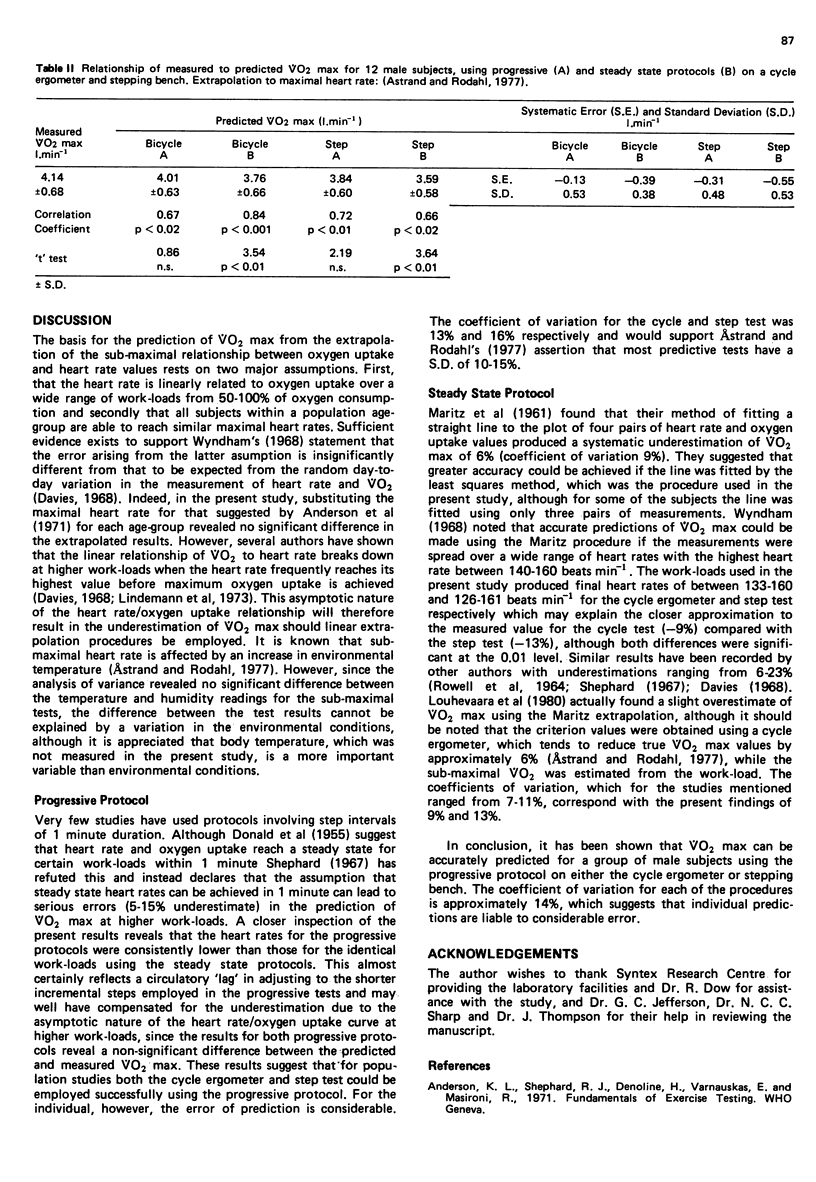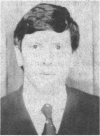Abstract
The predictability of the maximal oxygen uptake (VO2 max) was studied using progressive and steady state protocols for cycle ergometry and bench stepping. The subjects were 12 healthy men, 23-58 years old. Prediction of VO2 max was made by extrapolation of the heart rate and O2 uptake at several sub-maximal work-loads using the least squares regression technique. The four sub-maximal procedures underestimated the measured VO2 max by between 0.13-0.55 l.min-1. The differences between the measured and predicted values were statistically significant for the tests involving the steady state protocol. The correlation coefficients between the predicted VO2 max for each of the submaximal tests, and the measured VO2 max, were significant at the .05 level. The results indicate that for a group of male subjects VO2 max can be predicted using the progressive protocol on either the cycle ergometer or stepping bench. Individual predictions are liable to considerable error.
Full text
PDF



Images in this article
Selected References
These references are in PubMed. This may not be the complete list of references from this article.
- ASTRAND P. O., RYHMING I. A nomogram for calculation of aerobic capacity (physical fitness) from pulse rate during sub-maximal work. J Appl Physiol. 1954 Sep;7(2):218–221. doi: 10.1152/jappl.1954.7.2.218. [DOI] [PubMed] [Google Scholar]
- Davies C. T. Limitations to the prediction of maximum oxygen intake from cardiac frequency measurements. J Appl Physiol. 1968 May;24(5):700–706. doi: 10.1152/jappl.1968.24.5.700. [DOI] [PubMed] [Google Scholar]
- Hardman A. E., Williams C. Exercise metabolism in runners. Br J Sports Med. 1983 Jun;17(2):96–101. doi: 10.1136/bjsm.17.2.96. [DOI] [PMC free article] [PubMed] [Google Scholar]
- Harrison M. H., Brown G. A., Cochrane L. A. Maximal oxygen uptake: its measurement, application, and limitations. Aviat Space Environ Med. 1980 Oct;51(10):1123–1127. [PubMed] [Google Scholar]
- ROWELL L. B., TAYLOR H. L., WANG Y. LIMITATIONS TO PREDICTION OF MAXIMAL OXYGEN INTAKE. J Appl Physiol. 1964 Sep;19:919–927. doi: 10.1152/jappl.1964.19.5.919. [DOI] [PubMed] [Google Scholar]
- Thompson J. The repeatability of the measurement of aerobic power in man and factors affecting it. Q J Exp Physiol Cogn Med Sci. 1977 Jan;62(1):83–97. doi: 10.1113/expphysiol.1977.sp002379. [DOI] [PubMed] [Google Scholar]
- Williams C., Nute M. L. Some physiological demands of a half-marathon race on recreational runners. Br J Sports Med. 1983 Sep;17(3):152–161. doi: 10.1136/bjsm.17.3.152. [DOI] [PMC free article] [PubMed] [Google Scholar]
- Wyndham C. H. Submaximal tests for estimating maximum oxygen intake. Can Med Assoc J. 1967 Mar 25;96(12):736–745. [PMC free article] [PubMed] [Google Scholar]



